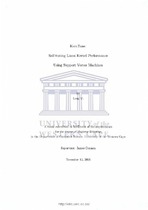| dc.description.abstract | In this chapter, we provide the motivation and background behind the automatic
optimisation of an operating system. We begin with a discussion of some of the
difficulties of automatic operating system optimisation and the benefits of automatic
optimisation technology which inspired our research. We then describe the research
problem and aims. Thereafter, our approach and methodology are explained. Finally,
the organisation of the thesis and summary are presented.
1.1 Background and Motivation
In today's networking world, a mission-critical server requires consistently good performance
[2] . To this end, almost all operating systems which run on such a critical
server are managed by system administrators who should be skillful and experienced
in tuning operating systems by adjusting system configuration and performance parameters
of the operating system to run a specific system workload. This involves
system capacity planning, performance metrics, workload characteristics, system settings,
etc. Skillful system administrators are scarce and expensive. As computer
hardware becomes cheaper and free critical computer software becomes more viable,
e.g., Linux, Samba, Mysql, Apache, the total cost of ownership for building and
maintaining a mission-critical server becomes more and more dominated by the cost
of human resources. Furthermore, with the increasing number of new applications
and services, a modern operating system offers more system parameters with larger
ranges for more system classes than ever before. This situation serves as our motivation
for a new generation of automatic optimisation technology for operating systems.
The potential benefits of the automatic optimisation technology will be amplified as
future applications and operating systems become more complex. | en_US |

